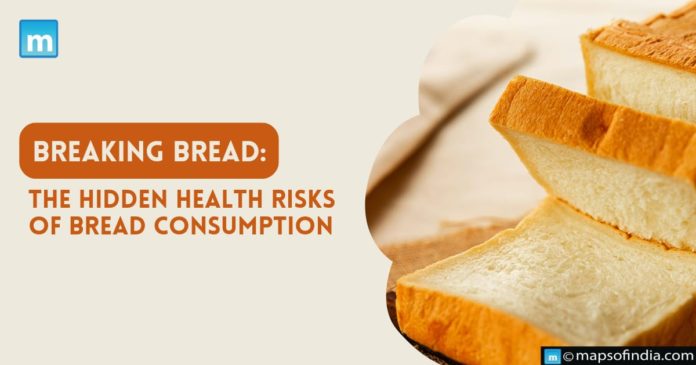Bread has been consumed by millions every day, at all times of the day, for centuries now. In earlier times, bread was baked in households with the help of just four ingredients – wheat flour, water, salt, and some yeast. Centuries passed, and with the rise of the Industrial Revolution, bread got industrialized, too. Industrial bread became a cheaper and more convenient option when compared to homemade bread. But it also brought some hidden health hazards that consumers are unaware of. Health experts worldwide are concerned due to an increase in various health issues because of bread consumption.
Here are some hidden health risks of bread that an average consumer might not be aware of:
-
Emulsifiers
Due to emulsifiers such as polysorbate 80 and lecithins in industrial bread, there has been an increased risk of obesity and metabolic disorders. Emulsifiers are added to bread to make it more soft and fluffy. However, these chemicals are directly connected to microbiome alterations, compromised gut barrier function, and inflammation, which are linked to obesity and several other metabolic disorders.
-
Preservatives
Industrial bread uses a high amount of preservatives such as sodium sulfite and potassium metabisulfite to increase the shelf life of its product. However, with increased shelf life, preservatives also increase the risk of cancer. And these preservatives also cause respiratory issues in individuals with asthma.
-
High Glycemic Index
Industrial breads are not made with pure, whole-grain flour. Instead, they use refined flour, which has a high glycemic index. It increases the blood sugar levels in the body after consumption. These rapid blood sugar levels can slowly lead to type 2 diabetes, insulin resistance, and other health problems.
-
Low Fiber
Compared to homemade bread, industrial bread comes with much lower fiber. As we all know, fiber is essential in a healthy diet as it helps regulate blood sugar levels and keeps our gut healthy. A low-fiber diet can increase the risk of heart disease, constipation, and even cancer.
-
Added Sugar
There is a high amount of sugar added to industrial bread. Added sugars are empty calories that can contribute to obesity, tooth decay, and other health problems.
-
Artificial Coloring
Artificial colors and flavors are highly used in bread and other industrial food products. These flavors and colors are linked to many health problems. But hey! Not all industrial bread is created with the same formula. There are some brands out there that make bread with high-quality ingredients and little to no additives. They are often much more expensive than ordinary bread, and not everyone can afford that.
Always look at the back of your bread’s packet, and you can see all the additives they’ve added. It’s always better to buy whole-grain bread because it has high fiber and nutrients. The best way to consume bread would still be by making it in your household. Homemade bread is the most healthy and nutritious bread!





